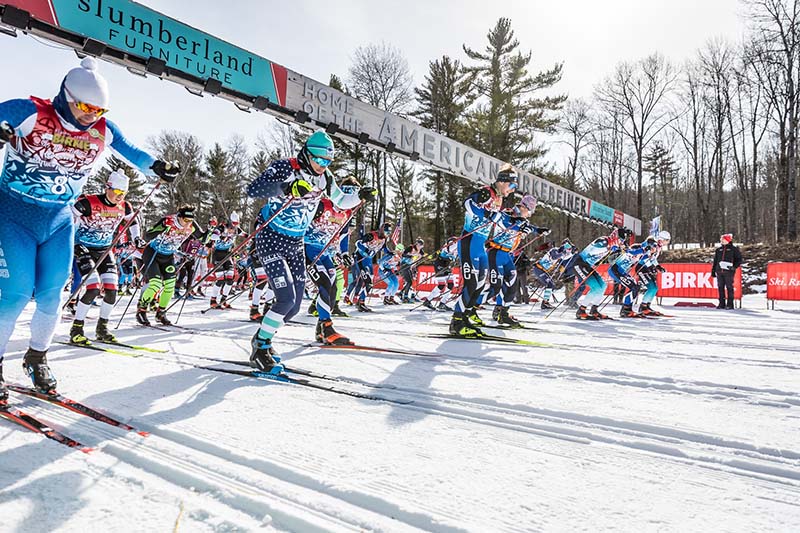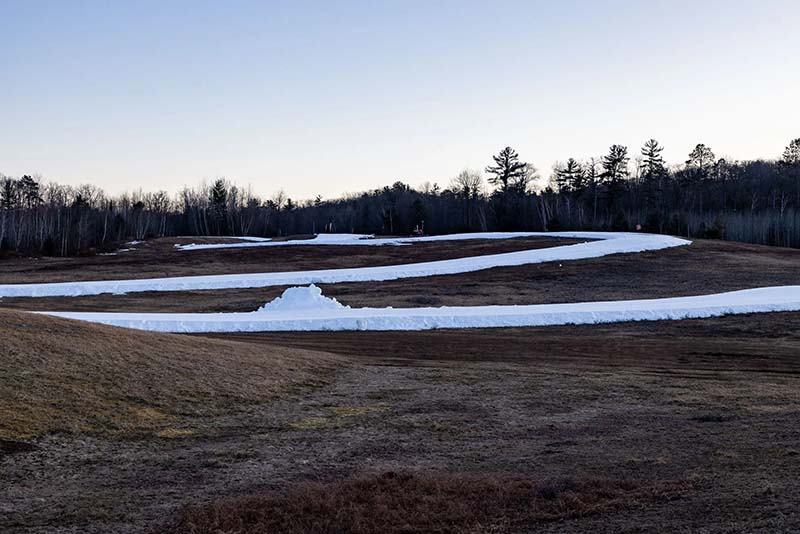Ben Popp is the executive director of the American Birkebeiner Ski Foundation. He lives in Hayward, Wisconsin.
Tell us a little about yourself and why you are involved in the Birkebeiner.
I grew up in northern Wisconsin. My parents were outdoorsy. Some of the earliest memories I have were winter ski outings with other families. We were outside all day eating and skiing. For me it was a really happy time. These memories were formative and created the impression that this happy, healthy lifestyle was not only good for individuals, it was also good for communities and bringing people together.
Because of my happy memories, I talked my wife into moving to northern Wisconsin after we had kids in 2013. That’s when I took over as director of the American Birkebeiner. We’ve never looked back.
I really believe in the mission of the American Birkebeiner, which is to get people active and outdoors. It is this really iconic event that is important for the state and the region, but also the world to inspire people to live this outdoor and active lifestyle. In 2024, 13,000 people skied during the 50th anniversary event, with over 25,000 spectators. The event brought $20 million to local economy. The Birkie has grown from this really small event to creating our founder’s vision of an event that would really impact the whole community.

Tell us about conditions you are seeing in holding the event.
The Birkie travels across public lands and Lake Hayward to get into downtown Hayward. This makes it imperative to have cold weather and snow. In 2000, we cancelled the race because of lack of ice on Lake Hayward. In 2013, we had huge storms that collapsed all our tents. We were not able to get across Lake Hayward in 2016. We had to cancel in 2017 when we got the normal amount of precipitation but it was all coming in the form of rain, the ground wasn’t frozen, and everything was muddy. That was a turning point.
We realized that as things change, we too need to adapt. The climate is changing and to save this event for our community, we needed to do something. We started to identify how can we ensure winter comes whether winter comes or not. We decided to diversify from one or two events to over 45 per year. Many are in the summer or at other times of the year so we aren’t as dependent on snow.
In 2017 we were helpless. We had no way to make snow or move snow into low snow areas. We decided we needed a whole series of contingencies to address different trail conditions. For example, there is more snow in the north due to lake effect snow, and so we decided to create a loop in that area near Cable. We looked at contingencies for when we can’t get across Lake Hayward.
That something also included the need to create snow, which is a big investment. As a small non-profit, we’ve invested just over $600,000 on snow making. While that investment causes concern to some, we are looking at methods to ensure it is sustainable and we are not worsening the problem of climate change. That includes looking at the volume of groundwater we use and methods to return it back into the ground, using renewable sources of power to make the snow, options for attendees to be a part of the solution with offsets, and other green practices.
How did you deal with the conditions this year?
2024 was a unique Birkie. As difficult as it was, we had luck on our side and it worked out to be an amazing 50th anniversary. We anticipated it was going to be a difficult year when we tried to make snow for the Turkey Birkie around Thanksgiving. We struggled because the weather was so warm and so dry. November also was warm and dry. The biggest snow we got all year was around Halloween.
December was cold enough and we held our first race. Then at Christmas, we had a huge meltdown that shut us down again. At that point, the team was amazing at coming together, looking at scenarios, and problem solving. We realized this might not be a normal Birkie.

We were able to make snow at the end of December that allowed us to do some planned events using a four-kilometer loop. We made the decision to make the unusual move of bringing back snow makers for a third time in early January. That was the game changer for us. Normally we make the snow on trails, even though it’s really inefficient and we lose a lot of snow into the woods. We decided to be more efficient this time by making all the snow in one place. With the Birkie six to eight weeks away, it was a roll of the dice.
There was one 10-day cold period in January when we ran machines full blast and we made a lot of snow. Then the temperatures rose to 50 and it was rainy right when we were ready to truck it to the trail, so we waited to move it. The pile of snow was 150 meters long by 15 high and 20 wide. The rain created a shell of ice that preserved it. Then, 10 days prior to the Birkie we had to move it to the trail. We reached out to local snow plow contractors who needed work.
We also reached out to the Town of Cable, Bayfield County. Everybody agreed this was a community project and off they went. We ended up with this magical 10-kilometer loop that was good for everyone from the beginning skier to the elite athletes. The ups and downs were amazingly stressful but at the end of the day it was incredible. It was different, but still special. We wouldn’t want to do it this way every year, but it brought the community together and inspired people to be active.
What do you see for the future of the Birkebeiner? Do you have hope?
I do. As a culture we realize climate change is happening and we need to be part of the solution. The Birkie as a community, organization, and event came together this year to help solve challenges and bring new ideas and technology to bear in maintaining an important part of the economy for the region. It may look different every year, but it will continue to be an event that challenges us and brings us together.
Learn More
Contact Information
Ben Popp
Executive Director
American Birkebeiner Ski Foundation
Ben.Popp@birkie.com
(715) 634-5025 or (715) 558-3091 (mobile)
10527 Main St.
P.O. Box 911
Hayward, WI 54843